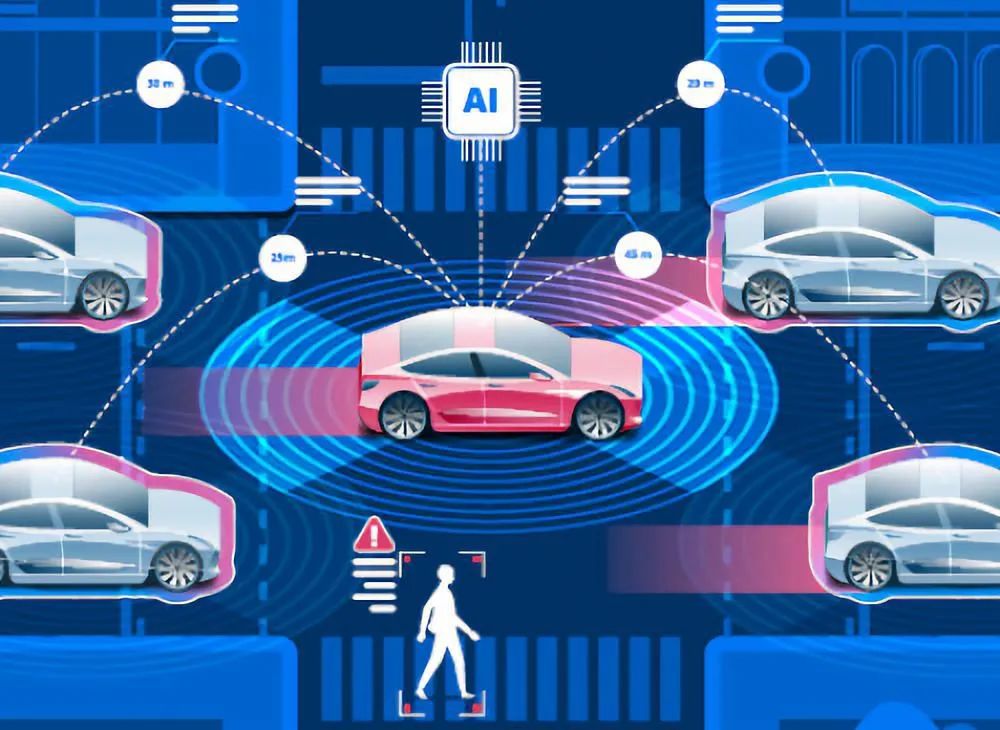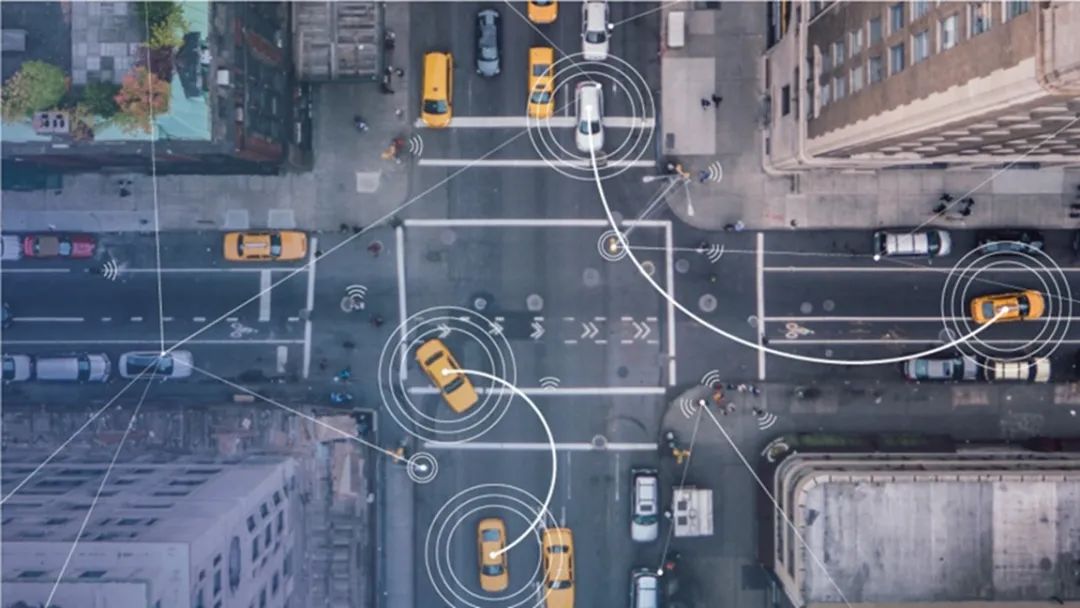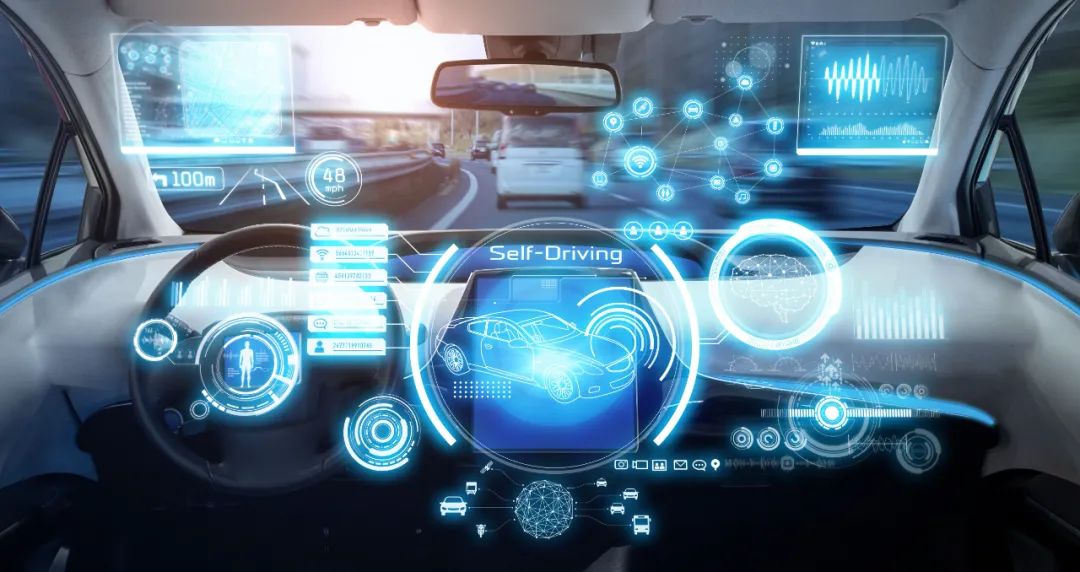

What is the Internet of Vehicles? Industry insiders jokingly say that it simply means a smartphone on wheels. The Internet of Vehicles is not directly related to new energy vehicles and can be applied to any fuel vehicle. It focuses more on user experience and provides an application scenario. In terms of digitalization and calculations, the Internet of Vehicles is still hard technology, and it is also part of the smart cockpit. The combination of smart cockpit and autonomous driving is the core competitiveness of future automotive companies.
First, let’s take a look at the intricate connections between the “Internet automotive companies” and the Internet of Vehicles. Firstly, Huawei is working on underlying communication protocols, focusing on autonomous driving, and has little involvement in the Internet of Vehicles. Secondly, Xiaomi, which is rooted in home and consumer electronics, is building its own cars and is unlikely to use third-party Internet of Vehicle systems. Baidu’s Apollo is focused on autonomous driving; although Baidu Cloud can support the Internet of Vehicles, Baidu continues to promote Apollo and its joint venture with Geely, the “Jidu” vehicle, where the Internet of Vehicles is not the focus, and the Jidu vehicle is expected to hit the market in about two years. Furthermore, SAIC and Alibaba’s Zebra project leans towards the Alibaba ecosystem, representing a more pure Internet of Vehicles as an independent third party, with SAIC being one of the shareholders of Zebra.
1. Safety and Business Risks of the Internet of Vehicles
Most people still have a vague understanding of the concept of the Internet of Vehicles. We conducted interviews with many users, and everyone expressed their intuitive feelings about the Internet of Vehicles.
Firstly, everyone feels that the current network, hardware, and software are not sufficient to support the Internet of Vehicles. Currently, cars use CAN bus, which is not a network but merely a bus control system. Suppose a car is two meters long, traveling at a speed of 80 kilometers per hour; the first issue to address is how to connect the car to the network, and many cars currently lack the necessary hardware. Additionally, the traditional automotive industry is very conservative; the R&D process for automotive electronics takes at least three years, while the development cycle for key safety electronic components can exceed five years. Furthermore, a parts supplier must repeatedly confirm with downstream manufacturers before delivering a single screw, which means that traditional automotive companies rarely engage in these areas. In the new energy vehicle sector, some companies are eager to try, but the Ministry of Industry and Information Technology recently issued an order prohibiting arbitrary OTA upgrades.
Moreover, there are more concerns regarding safety, such as if a car can autonomously connect to the network and communicate, it is difficult to predict the risks, and current laws should not allow it. For example, if a car is driving at high speed and a hacker suddenly takes control of the system and issues commands, the consequences could be unpredictable. For instance, if a hacker controls the windshield wipers during rain, isn’t that dangerous? Therefore, there are too many uncontrolled factors when transmitting over the network.
However, some friends argue that the Internet of Vehicles is an inevitable trend; for instance, investing one dollar in the Internet of Vehicles could generate ten dollars in automotive output value, driving the development of a series of industries such as IDC, bus systems, digitalization, intelligence, automation, and software. Of course, the security of the Internet of Vehicles does have certain issues, but this is not just a problem for this industry; any internet-connected system will face hacking issues. Even if your device is not connected, others can still install networking technology on it, which is a matter of network security technology.
In other words, the Internet of Vehicles must first address network security issues before discussing connectivity issues. However, it can also experiment and build in low-speed and open-space scenarios for freight transport. This way, foundational experiments can be conducted while promoting network security construction.
It is even possible to draw on the internal industrial interconnection networks of large chemical plants, which are isolated from the external network, allowing for initial advancements before resolving network security issues, or first addressing functionality before tackling network security.
For example, the current CAN bus in cars can read and write data via the OBD interface, which still has many attack vulnerabilities, but the cost of attacks is relatively high when not connected to the network.
Moreover, normally, people do not worry about being attacked on the road; they do not need to wear armor all the time. This is where legal deterrence comes in, so network security requires state intervention, as there needs to be legal support to curb cybercrime. Therefore, once the Internet of Vehicles is implemented, the government must introduce corresponding network security laws and enforce strict legislation.
It can also be stratified; for instance, government vehicles and military vehicles could operate on one network, while the current internet would use a different architecture, not based on TCP/IP, but rather on chip technology. The Internet of Vehicles could be constructed as a private network, and whoever leads will set the standards.
Everyone has made a bold assumption: China could potentially surpass Germany and Japan through electric vehicles and the Internet of Vehicles, enhancing overall social efficiency, not just individual comfort.
However, industry insiders summarize that people are overthinking; the complete vehicle control has its own safety protocols. The relationship between the Internet of Vehicles and autonomous driving is not particularly direct, and under normal circumstances, the concerns raised will not occur. This does not mean that hackers won’t appear, but the Internet of Vehicles is more about communication protocols and cockpit experience, constructing consumer electronics scenarios within the automotive context.
So, what is the true technology of the Internet of Vehicles, and how far has it progressed?
2. Overview of Internet of Vehicles Technology Issues from Industry Practitioners
We not only interviewed users but also companies, and most companies provided observational solutions regarding the current technical status. The first question is: what is the current state of industry development in the Internet of Vehicles? Generally, the Internet of Vehicles is subdivided into V2C, V2V, and V2X. V2C focuses on human-vehicle experience and has developed earlier; most new mid-to-high-end cars on the market are equipped with V2C technology. V2V and V2X focus on driving experience and road safety, having started later, with only a few high-end models equipped with V2V technology, while V2X is almost non-existent in practical applications.
Additionally, the Internet of Vehicles is a relatively vague concept; connectivity is the foundation for the development of smart vehicles, and it can be divided into two major directions: smart cockpit and autonomous driving. The smart cockpit primarily serves the passengers in the vehicle, has a faster landing speed, and offers a more direct user perception. It has become one of the highlights for automotive companies to create differentiated competition and attract consumers, and it is also where internet advantages are most pronounced.
The autonomous driving direction is the most important field for future vehicles and the core domain of the automotive brain. Its technological threshold is high, and the industry is currently undergoing a transformation period. Smart connectivity is the core strategy for almost all automotive manufacturers, with three main types of participants in this field: OEMs (with new forces > traditional domestic OEMs > joint venture OEMs), Tier 1 suppliers (such as Desay SV, Huayang Group, Jingwei Hirain, Joyson Electronics, and Zhongke Chuangda) can provide overall capabilities for OEMs, and Tier 2 suppliers (like Qualcomm, MediaTek, Sobot, iFLYTEK, and Amap, etc.); internet giants are also entering the field leveraging their capital and software development expertise.
So, what is the actual landing situation of Internet of Vehicles technology? In the smart cockpit domain, the following aspects can be observed regarding product implementation:
Hardware Usage: There is a trend towards larger screens and multiple screens, utilizing smart hardware such as HUDs, streaming media rearview mirrors, and in-car cameras;
Operating System: The in-car instruments primarily use the stable QNX system, while the central control screen employs Linux or Android-based vehicle systems, and AliOS to expand color functions;
Functions: Core functions are developed around navigation, voice, multimedia, entertainment, and vehicle control, with accompanying mobile apps;
Ecology: Relying on the ecosystems of BAT, mini-program ecosystems are integrated into vehicles (Alipay mini-programs, Tencent mini-programs, Baidu mini-programs), and smart home ecosystems (Haier Smart Home, Xiao Jingyu, etc.);
Interaction: There is a trend towards multi-modal interaction, integrating voice, gestures, touch, eye movement, and other interaction methods to adapt to driving scenarios.
V2C is relatively mature due to its early start, with technology primarily based on cloud computing and IoT communication protocols as information carriers. HMI, apps, and WeChat are used for human-computer interaction. Meanwhile, V2X and V2V have C-V2X standards, utilizing 5G as the communication means and cloud computing as the information foundation, with intelligent driving chips installed in vehicles.
What are the imaginative possibilities for the Internet of Vehicles? If we compare fuel vehicles to feature phones, vehicles equipped with smart connectivity are like smartphones. Through Internet of Vehicles technology, remote upgrades can be performed on in-vehicle systems, existing automotive functions can be expanded and added, and social and entertainment consumption can be facilitated through the system, providing consumers with new experiences and offering OEMs value-added services in the after-sales phase, thereby improving traffic safety management.
In summary, there are still (1) mature autonomous driving, liberating hands and eyes, truly becoming a fully functional smart cockpit, (2) AIOT, where various ecosystems fully integrate, truly becoming the core entry point for the Internet of Everything.
If the Internet of Vehicles is not simply a case of overtaking on a bend but rather changing lanes to run ahead, how should we understand this? The Internet of Vehicles belongs to emerging technology, and everyone is at the same starting line; on this brand new track, anyone could become a leader.
What challenges does the Internet of Vehicles face? For instance, technology, software, and infrastructure? Currently, the technology for V2C is relatively mature, but V2V and V2X involve interactions between vehicles, interactions between vehicles and infrastructure, and interactions between vehicles and people, with standards still being refined. Additionally, it involves collaboration and integration across different organizations and systems, as well as modifications to existing vehicles and infrastructure, meaning that large-scale application in the market will still take a considerable amount of time.
There are also barriers set up by OEMs, tech companies, and internet companies, making comprehensive integration still challenging. Each has its own strengths and weaknesses and wants to dominate this transformation; for example, OEMs excel at vehicle manufacturing, tech companies have advantages in chips and autonomous driving algorithms, while internet companies are proficient in user experience and ecological integration. Furthermore, the richness of scenarios is different; the automotive and mobile phone scenarios and demands are quite distinct, and cannot be simply transplanted; unique automotive driving scenarios must be developed to avoid competing on the same dimension as mobile phones.
3. What Future Possibilities Exist for the Internet of Vehicles?
Since we have discussed the distinction between mobile phones and vehicles, let us boldly hypothesize: if cars can connect to the internet, will connected vehicles replace mobile phones and become a mobile terminal? Some friends jokingly said: at least in offices and homes, cars cannot be used as mobile phones. More friends believe that there is no replacement relationship, but rather a complementary one that enhances the driving experience. In the future, cars will become significant mobile terminals, but with higher dissemination efficiency than mobile phones, as the closed environment generates greater attention to the vehicle’s dashboard and control information compared to mobile phones. However, they cannot replace mobile phones simply due to different application scenarios.
Currently, Tesla aims to transform cars into electronic products; this should be a crucial direction for new energy vehicles. Once autonomous driving technology matures, all vehicles can share technological achievements, reducing the waste of social resources, and vehicles will serve as mobile endpoints for point-to-point transportation. The form of mobile phones is likely to head towards virtualization. The product attributes are different, and the usage scenarios are different, making it difficult to replace; however, in-car apps still have considerable potential for development. Cars may not necessarily replace mobile phones but could directly merge, where the car is the phone and the phone is the car. Cars will become a personal, convenient tool for reaching any scene, naturally integrating mobile phone functions. Both forms are likely part of a distant future.
Returning our focus, the competition, cooperation, closure, and integration of these two electronic devices will usher in an era of diverse demands. Merging does not mean just between the two; in fact, mobile phones have already merged many functionalities, such as those previously held by computers. Mobile phones are no longer just about the current content but are trending more towards a concept of a port or node. Therefore, theoretically, it is feasible wherever they are integrated. Moreover, after the merger of cars and mobile phones, it could result in portable mobile tools, capsule technology, or even directly lead to space-folding technology or the Iron Man concept. These depend on the future technological development level and cost feasibility.
In summary, people need the Internet of Vehicles, but it must be safe; the Internet of Vehicles is an unstoppable trend. Building automotive companies with an internet spirit is the next wave, but whether it will be on the crest of the wave is uncertain, as there are technological constraints and industry ceilings. If the safety guarantees for autonomous driving can be completed in the future, imagine a closed mobile scenario where users have ample time to engage in their favorite activities, whether gaming, watching videos, or other pursuits. In other words, once the Internet of Vehicles and autonomous driving mature, automotive companies may not just earn money from “selling cars” but from services like content and traffic.
The future is on the road; let us look forward to it together.
Click “View”, and have a mutually beneficial relationship!







